http://www.dailytech.com/article.aspx?newsid=16358
.. A previous study had looked at using fMRI scans of parts of the brain linked to shape identification to correctly guess the a viewed image from a series of stock images. Jack Gallant, a University of California, Berkeley neuroscientist who led the current effort, describes this previous work as similar to “the magician’s card trick where you pick a card from a deck, and he guesses which card you picked. The magician knows all the cards you could have seen.”
The new study expands this approach greatly by also scanning parts of the brain used for general classifications like “person”, “car”, or “building”. Utilizing Bayesian probabilistic math, researchers armed with a database of over 6 million possible results and the new scans were able to go beyond identification into the realm of reconstruction, coming up with an image corresponding to what the person was thinking of, after an initial calibration to adjust for mental differences.
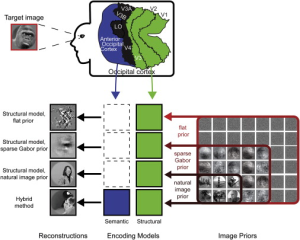
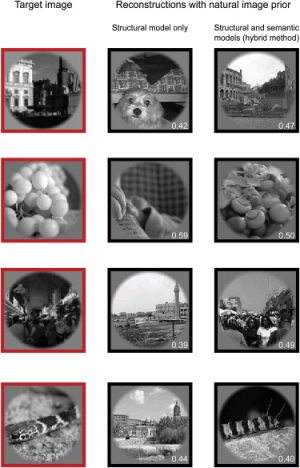
http://www.dailytech.com/article.aspx?newsid=16353
New breakthrough uses commercially achievable cold temperatures
Researchers at UC San Diego have made a breakthrough in integrated circuits using a particle type called excitons that can operate at commercially available cold temperatures. The breakthrough could one day lead to computers that are capable of running much faster than the machines we use today.
The same team made a similar discovery last summer with the development of an integrated circuit that was capable of working at 1.5 degrees Kelvin. The researchers point out that that temperature is warmer than the average temperature in space.
The new discovery is of a similar integrated circuit that can operate using excitons at 125 degrees Kelvin, equivalent to minus 234 degrees Fahrenheit. That is still a very cold temperature, but it can be achieved with commercially available liquid nitrogen. Liquid nitrogen costs about as much as gasoline. The previous discovery requiring temperatures of minus 457 degrees Fahrenheit was only achievable in specially outfitted labs.
http://www.dailytech.com/article.aspx?newsid=16340
3D printing is an interesting technology which allows engineers and designers to get a 3D object from a digital design that can be viewed in the real world. Artists also use 3D printing to make art that is designed digitally.
A team of engineers and artists working at the University of Washington’s Solheim Rapid Manufacturing Laboratory has developed a new method of using conventional 3D printers to create glass objects. A 3D printer typically uses a layer of powder that is activated by an ink jet printer that sprays a binding material at the exact location it is needed. The reaction binder adheres to the powdered and creates the object.
BBC News – Nasa’s Kepler planet-hunter detects five worlds.
Nasa’s Kepler Space Telescope has detected its first five exoplanets, or planets beyond our Solar System.

About time..
http://www.independent.co.uk/opinion/commentators/johann-hari/johann-hari-a-morally-bankrupt-dictatorship-built-by-slave-labour-1828754.html
http://filipspagnoli.wordpress.com/2009/05/04/human-rights-quote-120-modern-slavery-in-dubai/
Dubai is finally financially bankrupt – but it has been morally bankrupt all along. The idea that Dubai is an oasis of freedom on the Arabian peninsular is one of the great lies of our time.
there is a dictatorship built by slaves.
The people who really built the city can be seen in long chain-gangs by the side of the road, or toiling all day at the top of the tallest buildings in the world, in heat that Westerners are told not to stay in for more than 10 minutes. They were conned into coming, and trapped into staying.
In their home country – Bangladesh or the Philippines or India – these workers are told they can earn a fortune in Dubai if they pay a large upfront fee. When they arrive, their passports are taken from them, and they are told their wages are a tenth of the rate they were promised.
They end up working in extremely dangerous conditions for years, just to pay back their initial debt. They are ringed-off in filthy tent-cities outside Dubai, where they sleep in weeping heat, next to open sewage. They have no way to go home. And if they try to strike for better conditions, they are beaten by the police.
Every evening, the hundreds of thousands of young men who build Dubai are bussed from their sites to a vast concrete wasteland an hour out of town, where they are quarantined away. Until a few years ago they were shuttled back and forth on cattle trucks, but the expats complained this was unsightly, so now they are shunted on small metal buses that function like greenhouses in the desert heat. They sweat like sponges being slowly wrung out.



November 15th, 2009
admin
DailyTech – Nanoparticle Combination Painkiller to Save Lives at Home and on the Battlefield.
Morphine + special new drug + polymer nanoparticles = a lifesaver.
With injury, chronic or sudden, comes pain. The severity of pain can cause a variety of detrimental effects and dangers. One of the most common pain-relievers, used both on battlefields and in hospitals at home, is Morphine.
Morphine is a powerful pain reliever, but it has the unfortunate side effect of lowering blood pressure and depressing normal breathing. Both effects can cause a shortage of oxygen in the blood stream, a potentially deadly stress on an already injured patient. Typically in a hospital setting the effects are controlled with an antimorphine agent such as Naloxone, but on the battlefield, without the extensive monitoring equipment of a hospital, this becomes a dangerous art.
Now researchers at the University of Michigan have devised both a new drug and a new delivery system that promises to help control these side effects and bring safer, more effective pain relief to hospitals and to our soldiers serving overseas.
The new drug, a Naloxone derivative, transforms into Naloxone, only when blood oxygen levels dip to low, indicating the Morphine is interfering with breathing. Describes Baohua Huang, Ph.D., the study’s first author and a research investigator at the Michigan Nanotechnology Institute and in Internal Medicine (MNIMBS), “When respiratory distress is too severe, that will trigger release of Naloxone, the antagonist (morphine-suppressing) drug. When the oxygen blood levels go up, that will stop the action of the antagonist drug and more morphine will be available.”
November 15th, 2009
admin
DailyTech – Honda Reveals ‘Personal Mobility’ Device.
Honda recently showed off a new personal mobility technology that closely mimics a robotic unicycle designed to help disabled people move around.
The new device, the U3-X, has a seat height a bit higher than an average person’s waistline, and riders must jump up a bit before they can put their feet on a foot rest. Honda designed the U3-X so it can move forward and backwards, sideways and diagonally.
Riders simply need to lean the direction they wish to go in, and it has a top speed of 3.7 MPH.

November 15th, 2009
admin
DailyTech – Mission Success: NASA Announces “Significant” Amount of Moon Water Discovered.
The Shepherding Rocket then flew through the over 350 tons of excavated material, relaying readings back to Earth, before making its own crash-landing on the Lunar surface. After a month of analysis, NASA announced the results at a triumphant press conference at NASA’s Ames Research Center at Moffett Field near San Francisco, California.
Describes NASA scientist Anthony Colaprete, “I’m here today to tell you that indeed, yes, we found water. And we didn’t find just a little bit; we found a significant amount.”
He says an estimated dozen two-gallon buckets of water (in other words, approximately 24 gallons of water) was detected in the excavated debris — a significant amount of water. This provides the most compelling evidence to date in thelong running debate over whether the Moon has water frozen in its rocky soil. The composition was analyzed using spectrometers onboard the tailing rocket.
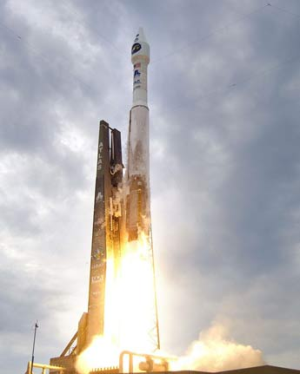
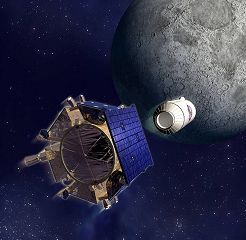
November 15th, 2009
admin
Ananova – University opens porn course .
A university in Taiwan has opened a course to teach students how to appreciate and analyse porn movies.
Internet searches stimulate brain more than books • The Register.
Researchers at the University of California Los Angeles have found that searching the web triggers centers in the brain that control decision-making and complex reasoning in middle-aged and older adults. But while web browsing may spark more neurons than mere book-reading, the study says, this only occurs in those with previous Internet experience.
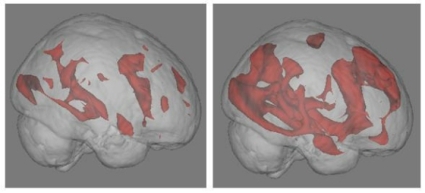
Anti-wi-fi paint offers security
via BBC NEWS | Technology | Anti-wi-fi paint offers security.
Researchers say they have created a special kind of paint which can block out wireless signals.
It means security-conscious wireless users could block their neighbours from being able to access their home network – without having to set up encryption.
The paint contains an aluminium-iron oxide which resonates at the same frequency as wi-fi – or other radio waves – meaning the airborne data is absorbed and blocked.
By coating an entire room, signals can’t get in and, crucially, can’t get out.
DailyTech – Commercial Plasma Rocket Reaches 200 KW, an Important Milestone .
Developed by former astronaut Franklin Chang Diaz, the engine could change a lot about how we interact with space. The new rocket, driven by plasma, is able to use cheaper fuels like neon, argon, or hydrogen, while providing finer control over thrust and specific impulse — two key parameters that determine a rocket’s movement and speed. The new rocket is also much safer and more reliable than traditional chemical rockets, reducing the risks associated with space flight.
The engine exhausts plasma, a fourth state of matter along with solids, liquids, and gases. Plasma is essentially ionized gas. It is typically created via either low pressure or extremely high heat (10,000° C or more). Plasma consists of a mix of electrons and positively charged gas ions.
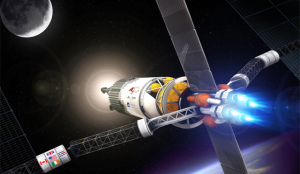
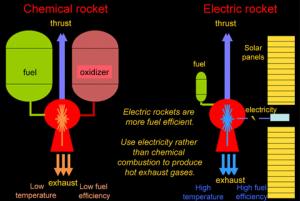
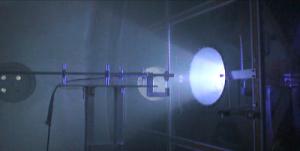



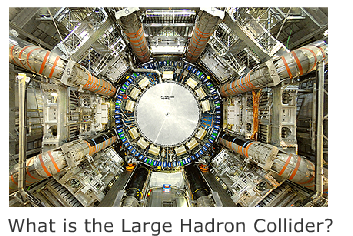












Recent Comments